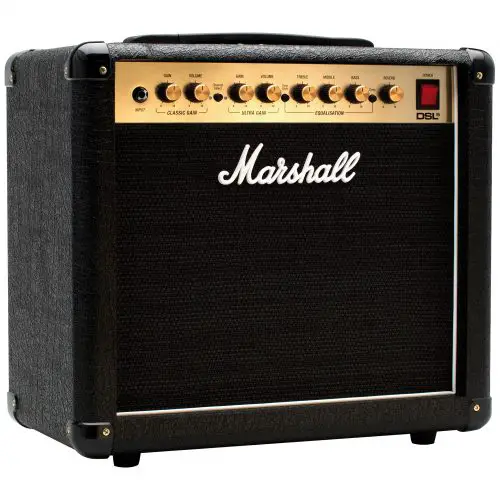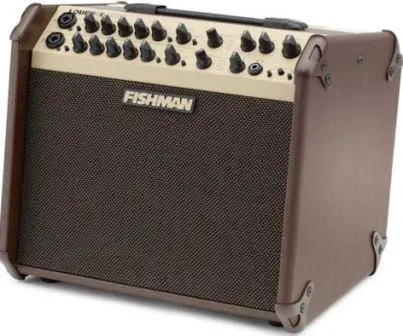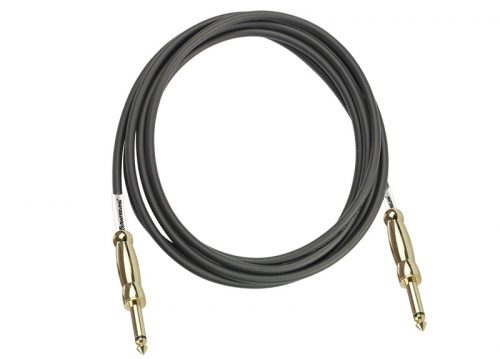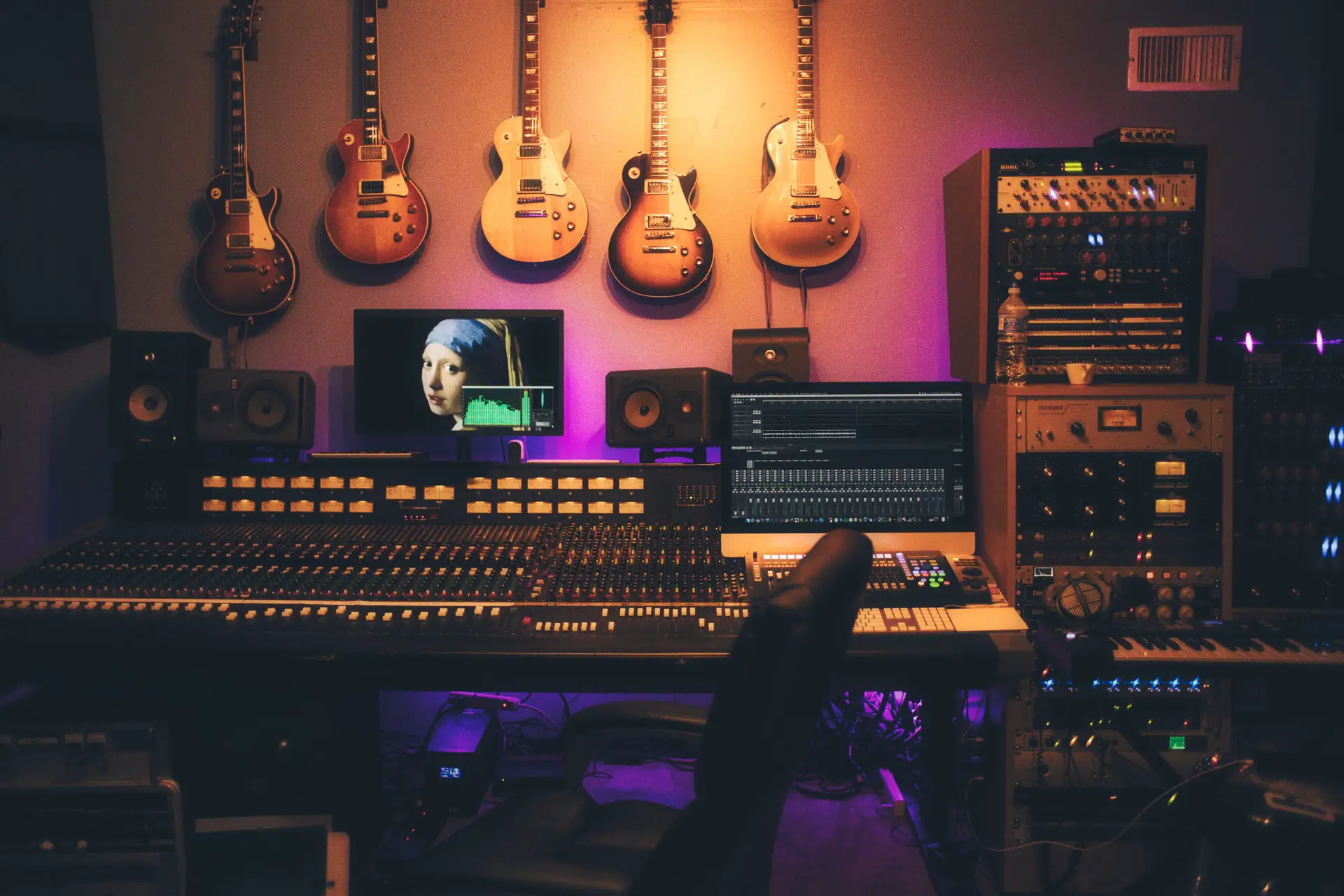All amps for a specific instrument are universal. For example, you can plug any electric guitar into any electric guitar amp (regardless of brands) and it will work great.
However, you shouldn’t connect an instrument with the amp of another. For example, connecting an electric guitar to an acoustic guitar amp will not yield a great sound. It will still work but not the sound you expect.
Most amps and instruments have the same audio cords – so technically all amps are universal but you won’t get the best sound.
I personally was also curious about this and did try connecting my electric guitar to any amps I could find. And I will share the result with you in this article.
Can any Guitar connect to any amp?
Regardless of what brand of guitar you are using, your guitar can connect to any amp from any brand as long as they are for the same instrument.
Meaning an electric guitar can connect to any electric guitar amp and any acoustic guitar can connect to any acoustic guitar amps (same goes for bass, pianos and others).
On a personal note, I have experimented with this before, and it is very true and common among all types of guitar and amps. So, for instance, it is possible to plug a Les paul guitar amp into any amp and get a very good sound.
I also tried connecting my electric guitar into different types of electric guitar amps like solid state, tube, hybrid, etc. It will work great.All types of amps are universal as long as you connect it for the intended instrument.
However, if you try connecting an electric guitar into an acoustic guitar amp, you won’t get the best sound and don’t expect any effects with gains. Technically you can connect them but they won’t sound good.
Also, connecting an instrument to amps for other instruments should not cause any damage. You just don’t get a great sound from it. This is because different amps are designed with different frequency ranges in mind.
Piano amps have wider frequency ranges and can produce more flat and clean sounds as compared to electric guitar amps.
Related Articles:
- Guitar Amp Vs Keyboard Amp: Differences & Possible Usages
- Acoustic Vs Electric Guitar Amp: Using One For The Other

You can connect electric guitars to amps from different brands – as long as the amps are made for electric guitars.
Can I use my guitar with a bass amp?
You can always plug your guitar into a bass amp without any significant damage; however, using a bass amp for your guitar can affect the sound or tune produced from your guitar.
Bass amps are designed to deliver low frequency sounds and will work well for a dull and bass-heavy sound. Whereas electric guitar amps are designed with higher frequency ranges – especially for effects like distortions.
You can technically connect an electric guitar to bass amps and it will work. However, bass amps are not ideal for guitars because they don’t provide the overdrive, distortion or any other built-in effects usually needed by guitar players.
It is essential to know what makes a bass amp and a guitar amp; the biggest differences between a bass amp and a guitar amp are power, size, and frequency.
Can I connect my guitar with a piano amp?
You can use a guitar with a piano amp and it will work (the inputs are compatible). However, the sound produced will be different – you won’t get that effect-heavy sound like gains or distortions
Electric guitar amps have lower frequency ranges and are designed for heavy effects play. Whereas piano amps have higher frequency ranges for a flatter and clearer sound.

You shouldn’t use amps that are designed for other instruments. For example, this Fishman amp is an acoustic amp. Using it with an electric guitar will yield is disappointing sound without effects.
Are all guitar cables universal?
All guitar cords/cables are universal and generic; regardless of the cord you are using, it will work with any guitar without causing any damage.
As a professional guitarist, I have used a lot of cords for various guitars; despite the change in the cord, the guitars still produced a nice sound.
It’s important to know that shorter guitar cables are generally better because you can preserve as much sound signals as possible.
Related article: Effect Of Guitar Cables On Tone: Length, Thickness, Costs
What Cords Do I Need?
1. Electric Guitar Cables
The standard instrument cable comes with two ¼ inch plugs, which can be used interchangeably at the amp or instrument end.
These cables are relatively inexpensive. So, you don’t have to splurge on a top-tier cable since they all do the same thing, and the price generally won’t affect your sound overall.
Guitar cables don’t last forever, but they’ll have longer lives if you take good care of them. Taking care of a guitar cable is relatively easy: you only need to make sure it’s plugged and unplugged properly (when the amp is turned off and volume down).
2. Electric Pedal Cables
Electric pedals use the same instrument cables as electric guitars and most keyboards. So if you plan on using an electric pedal to distort or add effects to your music, you can buy an extra instrument cable and use it the same way.
All you need to do is connect your guitar to your pedal before plugging it into the amp, and you’re good to go!
Of course, it gets more complicated if you have more than one pedal, as you’ll need an audio interface to connect all of your instruments and pedals to amplifiers.

Guitar cables are universal and you don’t need an expensive one to get good tone.
How Do I Connect a Cable to My Amplifier?
Once you’ve purchased the right cables, it’s time to connect them. Most importantly, make sure the amp is turned off, and the volume knobs are down.
Also, be sure to do it in the right order; otherwise, you could damage the cables, your amplifier, and other instruments.
Follow these steps:
- Turn the amplifier off and lower the volume.
- Make sure the volume on the guitar is down as well.
- Plug the cord into the guitar first, and then the amp.
- Turn the amp on.
- Set the guitar’s volume to the highest setting.
- Set the amp to your preferred sound
The process is the same if you’re pushing your guitar through a distortion or effects pedal. First, turn off the pedal and the amp. Then plug the guitar into the pedal before plugging the pedal into the amplifier. This order will prevent feedback, amp “popping,” or potential damage to your equipment.
Conclusion
Although they are different types of amps, all amps can work and connect perfectly with any guitar regardless of the size; most amplifiers don’t come with cords; therefore, you are required to get a cord that properly fits your guitar.
However, all guitar cables are universal and generic.






